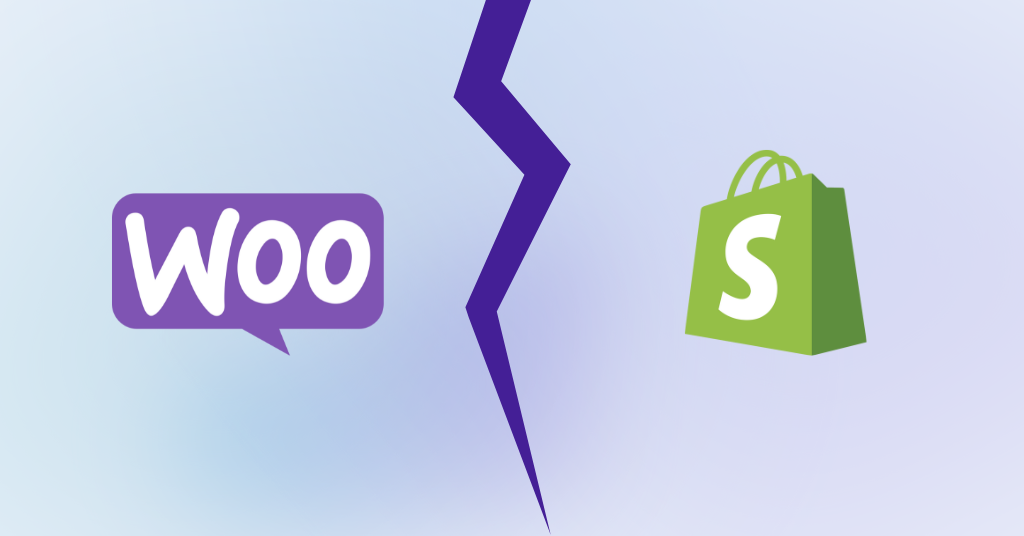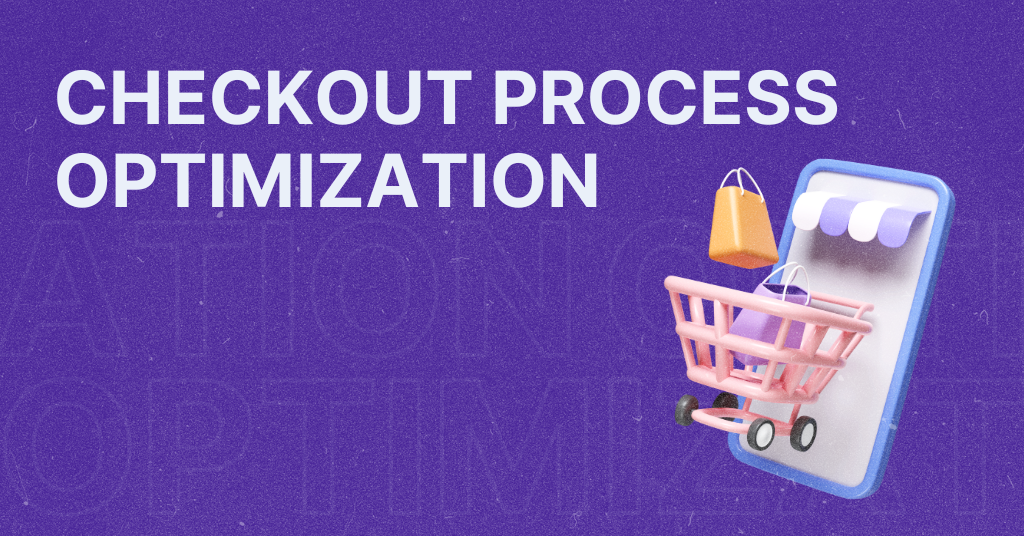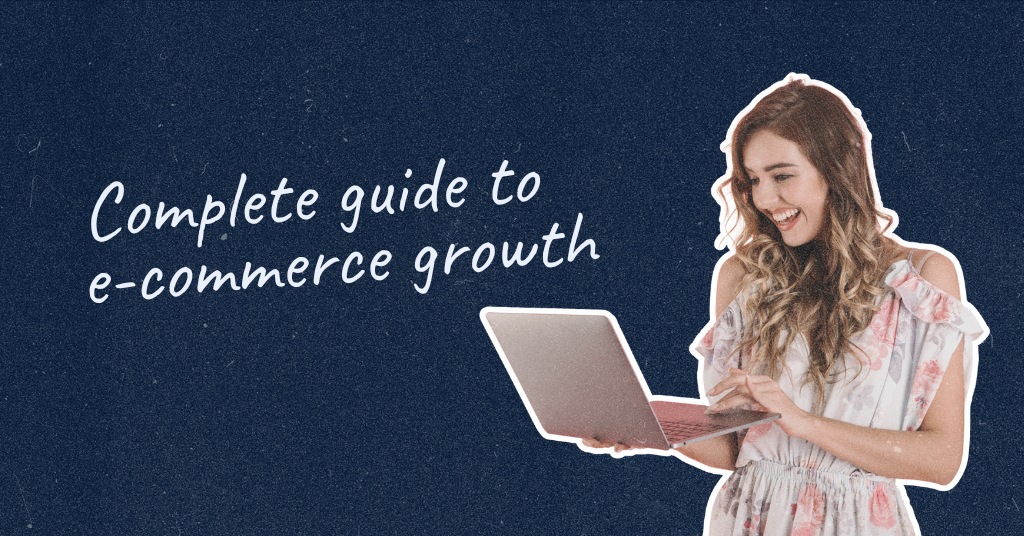
WooCommerce vs. Shopify: switching between e-commerce platforms
Choosing the right e-commerce platform is crucial in today’s digital world. It can ‘make or break’ your online business. With the growth of online businesses, the platform you select can determine whether your brand thrives or struggles.
The right e-commerce platform empowers you to showcase your products or services in the best possible light. Your brand has to offer attractive design, intuitive navigation, and compelling product displays. An e-commerce platform should allow you to manage inventory, track sales, and generate reports quickly. You’ll need to get valuable insights into your business performance. Also, a reliable platform ensures secure transactions, protecting customers’ sensitive information and building trust.
Beyond the technical part, the right e-commerce platform enables you to adapt and scale your business as it grows. It should offer flexibility in customization, integrations with third-party tools, and support for any features you may need later.
The two most popular platforms are WooCommerce and Shopify. These platforms are widely used and trusted by businesses of different sizes. Let’s compare these platforms and help you understand the process of switching between them.
Overview of the most popular e-commerce platforms
WooCommerce and Shopify are two viral e-commerce platforms used by businesses worldwide.
WooCommerce is a plugin for WordPress that allows you to customize and build your online store fully. It offers various extensions, seamless integration with plugins, and total control over the store’s design and functionality. WooCommerce is especially favored by businesses already using WordPress for their websites.
Shopify is a user-friendly, all-in-one solution allowing you to create and manage online stores easily. It offers many themes, a vast collection of apps, and features like inventory management and secure payment options.
In terms of popularity, Shopify and WooCommerce cover 10+ million of businesses worldwide. Shopify has more than 4 million active stores, while WooCommerce powers a significant portion of e-commerce websites globally by having more than 6 million active stores.
WooCommerce vs. Shopify
It’s time to compare both platforms by their features. There are several key features and aspects to consider.

Ease of use
So, how easy is it to use e-commerce platforms?
WooCommerce is very intuitive, and even beginner WordPress users can build stores even without tweaking the settings much. But, for more complex stores, it requires more technical knowledge as it operates within the WordPress framework. But, their knowledge base is excellent, so you can easily take all the steps for building an online store. Also, many affordable agencies and freelancers can take care of all steps on your behalf.
Shopify has a user-friendly interface and an intuitive setup process. Shopify is often a No. 1 beginner’s choice. Even people with zero technical expertise can find their way through the platform.
Pricing
Shopify has a subscription-based model, offering a range of plans tailored to meet diverse business needs. Their subscription-based model covers essential elements – hosting, security, and support.
Additional costs are associated with the use of apps beyond the core features provided by the platform. These apps enhance the store’s capabilities but are on top of a monthly subscription, or they are one-time paid.
Shopify charges a fee for every transaction made through its platform. The percentage depends on the plan selected. These transaction fees can accumulate over time and impact a business’s profitability. This may not be good for high-volume stores or those selling higher-priced products. Transaction fees may be a good part of small or new businesses’ sales revenue.
That’s why WooCommerce is popular among entrepreneurs, especially for limited budgets.
While the core WooCommerce platform itself is free, it’s essential to consider other costs. Domain registration and hosting come up as soon as you start your business. Don’t forget the potential costs associated with extensions or plugins.
Customization
If there were a competition for flexibility, WooCommerce would be a winner. This open-source platform empowers users to control their online store completely (design, functionalities, and features). Businesses can tailor their e-commerce experience to their unique vision and brand identity.
WooCommerce provides various themes, both free and premium, to choose from. These themes are a foundation for the store’s visual appearance and can be customized to match specific preferences.
WooCommerce extension library enables businesses to add functionalities and integrate with various third-party services. If you need an advanced product search or to implement complex shipping rules, WooCommerce’s flexibility allows limitless customization possibilities.
Shopify provides a user-friendly interface and a wide selection of themes and customization options. But, Shopify has some limitations. As a hosted platform, Shopify offers a curated set of articles and customization settings that users can leverage to personalize their stores. Some users may find these options limiting.
While Shopify provides a solid foundation for businesses to set up an online store quickly, WooCommerce’s flexibility is better for those seeking a more tailored and unique e-commerce experience.
Scalability
Every business should think about long-term growth and the ability of the chosen platform to follow demands.
Since WooCommerce is a self-hosted solution, the platform relies on hosting and server capabilities. This gives businesses more control and flexibility over their hosting environment. As their needs evolve, businesses can adjust their hosting resources (server capacity and bandwidth) to meet growing demands. With WooCommerce, businesses can optimize their shop to suit their needs and growth trajectory.
Shopify can handle high traffic levels and accommodate large product catalogs, and Shopify takes care of the server resources required to support growing businesses. Shopify can scale accordingly to ensure smooth operations as a business expands and gets more website traffic.
Every business should evaluate its growth trajectory, budget, technical capabilities, and preferences.
Design
Regarding design templates for e-commerce platforms, both WooCommerce and Shopify offer options that contribute to branding and user experience.
WooCommerce benefits from integration with the extensive WordPress theme library. This integration broadens the range of design templates available to WooCommerce users, with thousands of themes. The WordPress theme library covers various industries, styles, and design preferences, providing businesses with choices to find a theme that aligns with their brand image.
WooCommerce’s themes can be customized using WordPress’s customization options and third-party plugins, allowing for deeper customization and control over the design aspects of the online store.
Shopify has a collection of free and premium themes designed and optimized for e-commerce. These themes are crafted to enhance online stores’ visual appeal, functionality, and user experience.
These themes can be customized using Shopify’s theme editor, allowing businesses to tailor the design elements, colors, typography, and layout to align with their brand identity. Shopify themes have a balance between visual appeal and user-friendliness.
Maintenance
It’s time to get through the technical requirements. WooCommerce and Shopify have contrasting approaches that businesses should consider based on their technical expertise and preferences.
WooCommerce requires more technical know-how and responsibility. Businesses using WooCommerce manage server configurations, updates, and security measures.
Shopify handles all the technical aspects behind the scenes as a fully hosted solution. Shopify takes care of server maintenance, software updates, and security measures. Shopify’s team of experts keeps the platform up-to-date, secure, and optimized for performance.
Apps and plugins
WooCommerce is part of the WordPress ecosystem, which includes a massive library of plugins and extensions. As WordPress powers a significant portion of the web, WooCommerce benefits from the plugins available for WordPress. The WordPress plugin ecosystem offers diverse possibilities, whether adding payment gateways, integrating with email marketing services, or enhancing SEO capabilities.
Shopify has a marketplace with a selection of apps designed to extend the capabilities of its platform. The Shopify App Store offers a wide range of apps developed by third-party developers. These apps provide businesses additional tools (marketing, sales, analytics, etc.).
Third-parties integration
WooCommerce offers a diverse range of integrations through its plugin library. Businesses using WooCommerce can choose from thousands of plugins that allow integration with popular payment gateways, shipping providers, and marketing tools. WooCommerce’s plugin ecosystem covers a broad spectrum of services, allowing businesses to select the specific integrations that best suit their needs. From popular payment gateways like PayPal and Stripe to specialized shipping and fulfillment plugins, WooCommerce users can connect their online stores with services that align with their operational requirements.
Shopify is renowned for its extensive built-in integrations, providing businesses various options for connecting with popular payment gateways, shipping providers, and marketing tools. The platform includes built-in integrations with major payment gateways like PayPal and Stripe. Also, Shopify offers integrations with shipping providers, simplifying order fulfillment and shipping management. Various marketing tools can be easily integrated, including email marketing platforms, social media channels, and analytics services.
Search Engine Optimization (SEO)
Both WooCommerce and Shopify provide solid foundations for optimizing websites.
WooCommerce benefits from WordPress’s SEO-friendly architecture. WordPress is renowned for its search engine optimization capabilities, and WooCommerce users can leverage this advantage. WooCommerce users can install popular SEO plugins like Yoast SEO, All in One SEO Pack, or Rank Math to enhance their website’s SEO performance. These plugins provide many features, such as XML sitemap generation, keyword optimization, meta-tag customization, and content analysis. Businesses using WooCommerce can have more control and advanced SEO options for their online stores.
Shopify offers built-in SEO features that allow users to optimize their online stores for search engines. Users can easily customize meta tags, URLs, and page titles to make their website content more search engine friendly. Shopify’s interface enables businesses to optimize their product descriptions, headings, and alt text for images. Also, Shopify automatically generates sitemaps. These built-in SEO features allow companies to improve their website’s visibility and rankings.
Customer support
WooCommerce also offers support through various channels. The primary support comes from the WooCommerce community forums, where users can seek help, ask questions, and learn from other community members’ experiences. The forums are a valuable resource for troubleshooting issues, finding solutions, and getting guidance on using WooCommerce effectively. WooCommerce has extensive documentation, including user guides, tutorials, and developer resources, to assist users in understanding and utilizing the platform’s features. While WooCommerce does not offer direct customer support like Shopify, users can seek additional assistance through third-party developers, service providers, or agencies specializing in WooCommerce.
Shopify provides 24/7 support through multiple phones, live chat, and email channels. This ensures that businesses using the platform can receive assistance regardless of their time zone or operating hours. Additionally, Shopify offers extensive documentation that covers a wide range of topics, serving as a valuable self-help resource for troubleshooting common issues. The platform also fosters a supportive community where users can connect, share knowledge, and seek advice from other merchants and experts.

Switching e-commerce platforms
Switching from one e-commerce platform to another can be a strategic decision for businesses seeking improved features, better customization options, or cost savings. But it takes more work to do it.
So, why might someone consider making the switch?
There are many reasons why businesses contemplate a platform switch. It could be due to limitations in the current platform’s features or scalability, a desire for more control over the website’s design and functionality, or cost optimization.
Businesses may switch platforms to align better with their requirements, such as advanced inventory management, specific payment gateways, or integration with certain third-party services.
Now, let’s see all the steps in switching between WooCommerce and Shopify.
1. Pre-migration considerations
Before making a move, it’s essential to conduct thorough pre-migration preparations. This includes backing up your existing data, exporting product information, customer data, and order history. Evaluating the required features and functionalities you’ll need on the new platform is crucial.
2. Choosing a new platform
Research and choose the e-commerce platform that best suits your needs. Set up the necessary accounts and subscriptions with the new platform and ensure you understand its pricing structure.
3. Data migration
Transfer your data from the old platform to the new one. This involves migrating product details, customer information, and order history. It’s crucial to ensure data integrity and accuracy during this process.
4. Redesigning the website
Adapt your existing design to the new platform, or take the opportunity to give your website a fresh look. Customize the theme or build a unique design to match your brand identity and improve user experience.
5. Testing and functionality
Test the migrated data once the migration is complete and ensure everything functions as planned. Identify and resolve any issues or discrepancies during the testing phase.
6. Implementing integrations and third-party services
Integrate any necessary third-party services, such as payment gateways, shipping providers, or marketing tools. Ensure seamless connectivity and functionality across the various components of your e-commerce ecosystem.
7. Post-migration steps
After the switch, focus on post-migration activities. Optimize your new platform for search engines (SEO) by optimizing meta tags, URLs, and content. Redirect URLs from the old platform to maintain search rankings and inform your customers about the migration to avoid confusion.
Pros and cons of switching e-commerce platforms
Switching e-commerce platforms can bring many potential benefits, but it’s essential to consider both the advantages and challenges before making a decision.
So, what are the pros and cons of switching platforms?
PROS of switching e-commerce platform
One of the primary benefits of switching platforms is the potential for improved features and functionality. A new platform may offer advanced tools for inventory management, order processing, or customer relationship management, enhancing overall efficiency and productivity.
Also, switching can lead to better performance, such as faster page load times, improved site responsiveness, and a smoother user experience. This can contribute to higher conversion rates and customer satisfaction.
Cost savings can also be a significant incentive for switching platforms. Some businesses find that a new platform offers more cost-effective pricing plans, lower transaction fees, or reduced costs for additional features and integrations. Carefully evaluating the pricing structures and comparing them to your current platform can help identify potential savings.
CONS of switching e-commerce platform
It’s important to acknowledge the challenges and drawbacks associated with switching platforms. A potential challenge is the learning curve in familiarizing yourself with a new system. Understanding the new platform’s functionalities, customization options, and administrative processes may require time and resources. Adequate training and support can mitigate the learning curve and ensure a smooth transition.
Data migration can pose complexities during the switch. Transferring product details, customer information, and order history require careful planning to maintain data integrity and accuracy. It’s essential to have a well-thought-out migration strategy and allocate sufficient time and resources to complete the process without disrupting business operations.
Disruptions to the business can occur during the transition period. It’s important to anticipate potential downtime or temporary disruptions to the website or customer experience. Planning, notifying customers about the switch, and ensuring effective communication can help minimize any negative impact on your business.
Conclusion
If you are considering switching e-commerce platforms, evaluate your needs, benefits, and challenges. Weigh the advantages of features, performance, or costs against the data migration complexities.
Both WooCommerce and Shopify are great solutions for e-commerce. Here’s what our developers have to say about this topic:
“Shopify is a good solution for e-commerce, but WooCommerce’s flexibility and customization options empower business owners to have tailored future-proof e-commerce solutions. With full ownership of data, seamless integration with WordPress, and a wide range of plugins, WooCommerce offers limitless potential for sustained success.”
Consulting with experts or seeking advice from businesses undergoing a similar transition is a good idea. A thorough assessment of your requirements and a well-executed switch can pave the way for long-term growth and success in your e-commerce journey.
Let’s book a 30-min mobile strategy session and give your shop a boost.
Let’s book a 30-min mobile strategy session and give your shop a boost.


